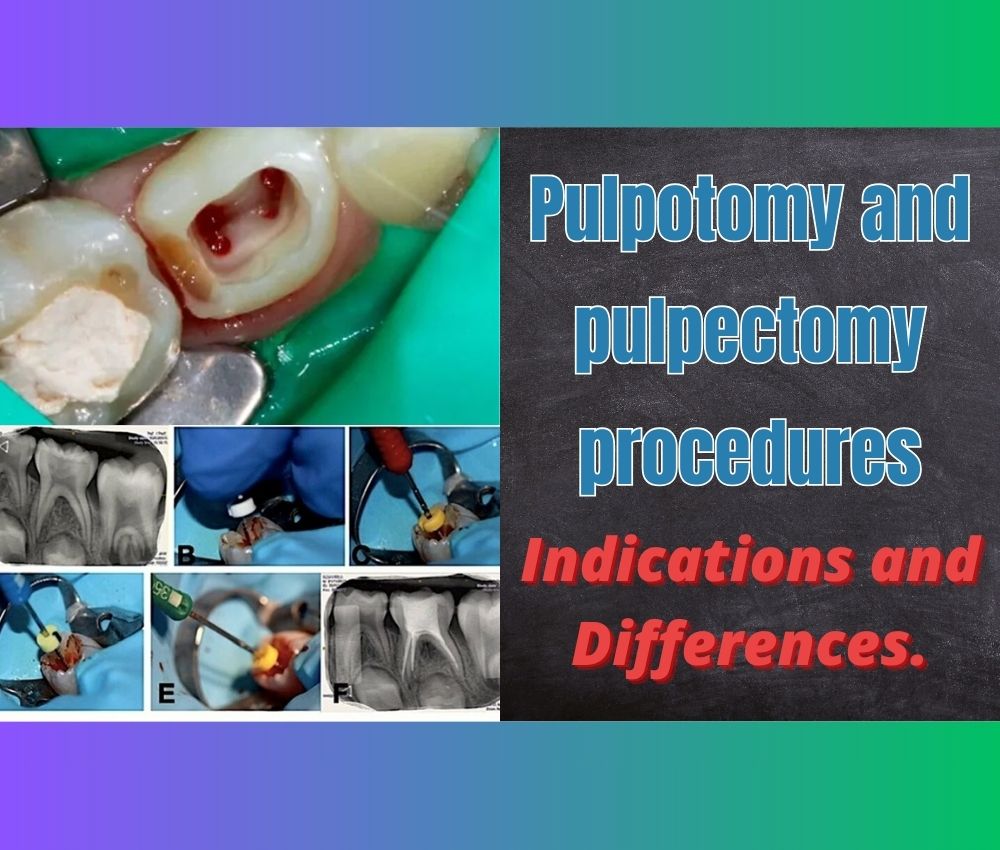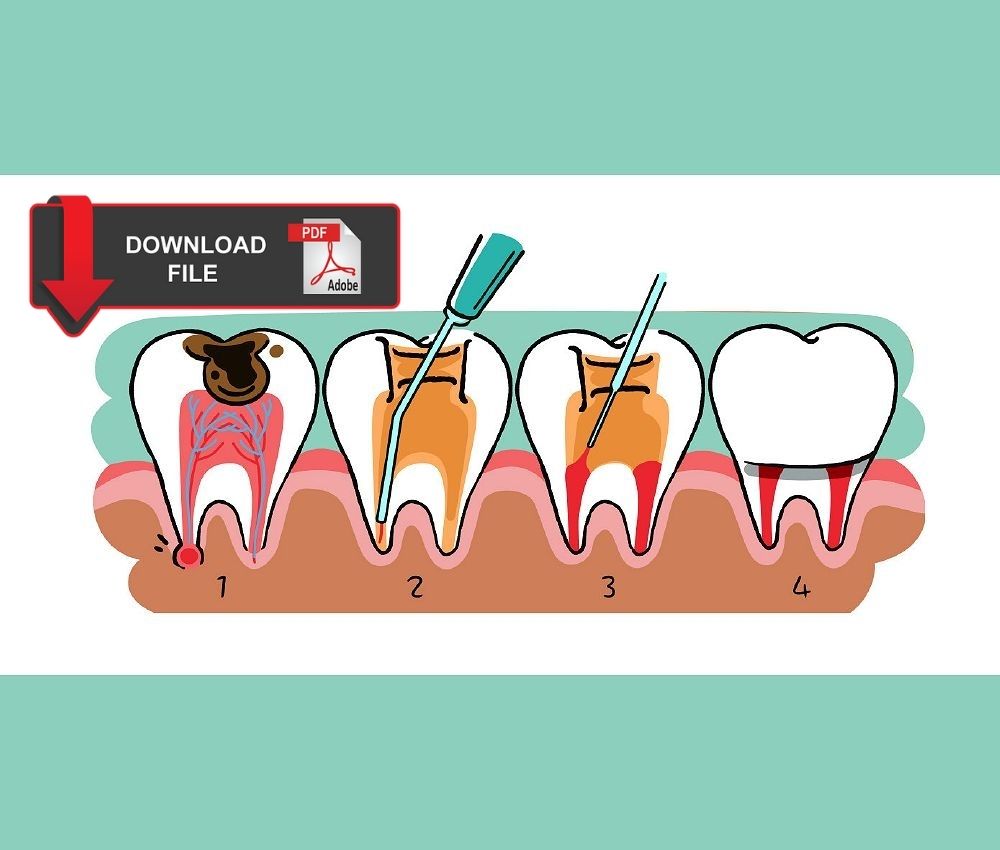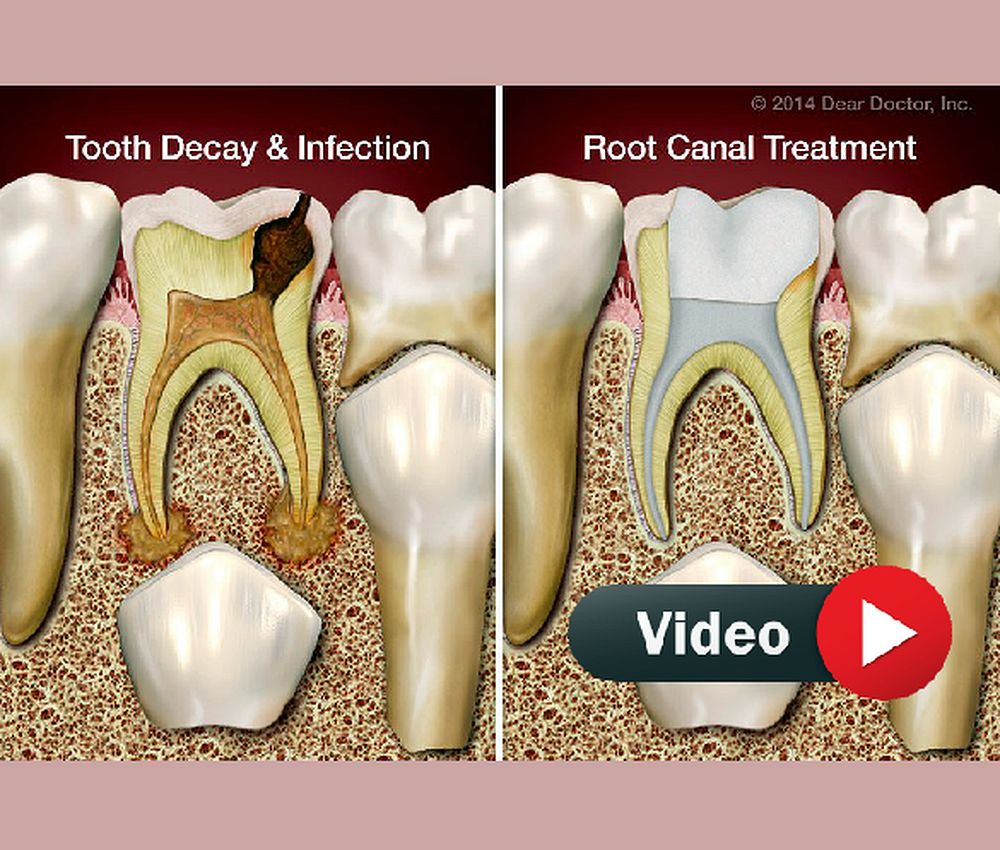Pulpectomy is a critical endodontic procedure in pediatric dentistry, particularly for primary teeth with necrotic pulps. One of the essential components for success is the use of appropriate irrigating solutions, which aid in disinfection, debris removal, and preparation of the root canal system.
📌 Recommended Article :
Video 🔽 Pulpectomy. Step-by-Step Procedure - Access, Preparation, and Obturation ... We share the step-by-step procedure of a pulpectomy performed with rotary files. In this video we can observe the opening, chemomechanical preparation and obturation.This article explores the properties, benefits, and most commonly used irrigants in pediatric pulpectomies, including top commercial products used in the United States.
Advertisement
✅ Importance of Irrigants in Pulpectomy
Endodontic irrigation plays a pivotal role in eliminating microorganisms, dissolving organic tissues, and flushing out dentinal debris and toxins from the canal system. In primary teeth, due to their complex morphology, presence of accessory canals, and physiological root resorption, the choice of irrigant must be both effective and biocompatible.
📌 Recommended Article :
Video 🔽 What is the difference between apexogenesis and apexification? ... In the presence of an open apex, apexogenesis (apicoformation) or apexification can be used. Both treatments have differences that will be resolved with the video that we show below.✅ Key Functions of Irrigants:
° Antimicrobial activity: Reduces the bacterial load within the canal.
° Tissue dissolution: Facilitates removal of necrotic pulp tissue.
° Debris removal: Prevents blockage and improves shaping.
° Lubrication: Aids in smooth instrumentation.
📌 Recommended Article :
Video 🔽 Pulpectomy: Clinical Tips and Tricks in Paediatric Dentistry ... Pulpectomy is performed when there is an infectious process (fistula or abscess), chronic inflammation, or pulp necrosis. The objective of this treatment is to maintain the tooth to avoid problems of poor dental position of the permanent teeth.✅ Commonly Used Irrigants and Their Properties
1. Sodium Hypochlorite (NaOCl)
➤ Concentration in pediatric use: 0.5% – 2.5%
° Antibacterial Effectiveness: Broad-spectrum antimicrobial activity.
° Tissue Dissolution: Excellent for organic material.
° Drawbacks: Cytotoxicity if extruded; requires controlled use in children.
➤ Popular Brands in the U.S.:
° Chlor-XTRA® (Vista Apex)
° UltraClenz® (Ultradent Products Inc.)
2. Chlorhexidine Gluconate (CHX)
➤ Concentration: 0.12% – 2%
° Advantages: Substantivity (residual antimicrobial effect), less cytotoxic than NaOCl.
° Limitations: Lacks tissue dissolution capability, may form precipitate when mixed with NaOCl.
➤ Popular Brands:
° Consepsis® (Ultradent)
° Peridex® (3M)
3. Ethylenediaminetetraacetic Acid (EDTA)
➤ Concentration: 17%
° Function: Removes inorganic smear layer, opens dentinal tubules.
° Use in pediatrics: Often used after NaOCl or CHX to improve canal cleanliness.
➤ Popular Brands:
° SmearOFF® (Vista Apex)
° File-Eze® (Ultradent)
4. Saline or Sterile Water
° Used as a final rinse to minimize residual irritants and cytotoxicity.
° Non-toxic and neutral, but lacks antimicrobial action.
📌 Recommended Article :
PDF 🔽 Use of Vital Pulp Therapies in Primary Teeth with Deep Caries Lesions ... The AAPD (American Academy of Pediatric Dentistry) presents a guide to pulp treatment in pediatric dentistry, with the aim of optimizing treatment care and results.✅ Emerging Irrigants in Pediatric Dentistry
° Silver nanoparticles and herbal irrigants (e.g., propolis, Morinda citrifolia) are under research for their biocompatibility and antibacterial properties. While not yet mainstream, they represent promising adjuncts in the future of pediatric endodontics.
💬 Discussion
The ideal irrigant for pulpectomy in children should possess a strong antimicrobial effect, ability to dissolve tissue, and minimal toxicity to periapical tissues. While NaOCl remains the gold standard due to its powerful tissue dissolution and antibacterial properties, its cytotoxicity and risk of extrusion necessitate careful handling, especially in children. CHX offers a safer profile but lacks the tissue dissolving action of NaOCl. Therefore, a sequential irrigation protocol, often involving NaOCl followed by EDTA or CHX, is recommended for enhanced efficacy.
Commercial products tailored for pediatric and adult endodontics in the U.S. market offer buffered, pre-mixed, and safer formulations to ensure optimal clinical outcomes.
📌 Recommended Article :
Video 🔽 Pulpotomy of Deciduous Molar - Step by step ... We share an interesting video that shows us how to perform a pulpotomy step by step, indicating the materials and the steps that we must follow.💡 Conclusion
Effective irrigation is fundamental to the success of pulpectomies in pediatric dentistry. A proper selection and sequence of irrigants can significantly enhance the debridement and disinfection of root canals in primary teeth. U.S.-market products such as Chlor-XTRA, Consepsis, and SmearOFF provide accessible and reliable options for clinicians. Ongoing research into biocompatible and innovative irrigants will continue to shape the future of pediatric endodontic care.
📚 References
✔ Mohammadi, Z., & Shalavi, S. (2014). Is chlorhexidine an ideal irrigant in endodontics? Journal of Dental Research, Dental Clinics, Dental Prospects, 8(2), 71–79. https://doi.org/10.5681/joddd.2014.013
✔ Pimenta, L. A. F., et al. (2021). Antimicrobial activity of different endodontic irrigants in primary teeth: A systematic review. Pediatric Dentistry, 43(1), 13–19.
✔ Hülsmann, M., & Hahn, W. (2000). Complications during root canal irrigation—Literature review and case reports. International Endodontic Journal, 33(3), 186–193. https://doi.org/10.1046/j.1365-2591.2000.00291.x
✔ American Academy of Pediatric Dentistry (AAPD). (2024). Guidelines on Pulp Therapy for Primary and Immature Permanent Teeth. Retrieved from https://www.aapd.org
✔ Haapasalo, M., et al. (2010). Irrigation in endodontics. Dental Clinics of North America, 54(2), 291–312. https://doi.org/10.1016/j.cden.2009.12.001
📌 More Recommended Items
► Clinical Pulpectomy Protocol: Updated Step-by-Step Guide
► What is the best pulp dressing for pulpotomies in primary teeth? - Review
► Pulpotomy and pulpectomy procedures. Indications and Differences










